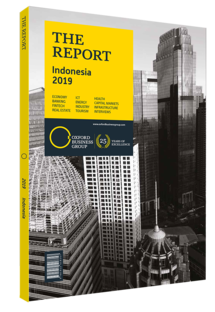David Cheadle, Managing Director, Cushman & Wakefield Indonesia: Interview

Interview: David Cheadle
What are some of the major challenges facing the Indonesian real estate market?
DAVID CHEADLE: From an institutional investor and private equity standpoint, Indonesia’s market can be a challenging one to operate in because Indonesians have historically preferred to build or purchase properties and then hold onto them. Indeed, traditional blue-chip real estate investment transactions are almost unheard of. In addition, given the current socio-economic climate a price gap between buyers and sellers has been evident for some time, with continuing uncertainty as to if or when rents and capital values will progress, creating differing perceptions of the current real estate cycle. Given the relatively low levels of borrowing, many owners still conduct their transactions outside the formal banking sector and often only sell properties when it is most convenient for them to do so. Due to this inherent lack of pressure to dispose, coupled – in the case of the office sector – with a depressed rental market, yields can be less attractive than those found in other more mature investment destinations. Nevertheless, there have been successes for foreign developers from Singapore, Hong Kong, mainland China, and most notably, Japan in recent years, but only for those who have built strong relationships with Indonesian landowners and developers, most notably through joint ventures.
What are the major differences between the landed housing and condominium markets?
CHEADLE: The landed housing market continues to be robust and sales are expected to continue despite economic challenges, particularly because 70% of landed-housing buyers are end users who predominately use mortgage financing. In contrast, about 70% of condominium buyers are investors and the majority invest for speculative purposes, using cash payments or instalments. The condominium segment has been flat and sales have been relatively slow, mainly because interest rates and bank deposit rates have increased. This has made investors much more hesitant and attentive to the overall opportunity costs of investing in this segment. However, over the past few years condominium presale rates have remained quite stable, at 57-62% on an annual basis. This indicates that the Indonesian market does have the capacity to absorb increasing volumes of future supply, and that there is still interest from both investors and end users. Although individual owners find it challenging to secure tenants, more Indonesians are now occupying and renting high-rise condominiums. Moreover, residential yields on condominiums are still attractive, at around net 8%, which is quite lucrative by regional standards.
How would you describe the current trends regarding Indonesia’s office segment?
CHEADLE: By the end of 2018 there was an oversupply of approximately 25% in the office segment, the highest since the 1997-98 Asian financial crisis, with some 2m sq metres of new projects having been delivered since the end of 2014. Since 2016 the mid-market office segment has seen no major developments whatsoever, as tenants have stayed in the same locations by renewing existing leases, with some benefitting from 20-40% rent reductions. However, the larger office segment – properties of at least 20,000 sq metres – has been surprisingly active, with a number of global or local mergers and acquisitions having taken place, leading to consolidations, often within newly completed buildings.
The markets that have generated the highest demand in the office segment over the last 2-3 years have been the e-commerce, online retail and co-working markets. While the rapid expansion of co-working spaces has been perceived locally to be in direct competition with the traditional office sector, the US and European experience suggests it is actually complementary, offering greater choice to companies and individuals. The outlook moving into 2020 is for a slowing of new supply, with occupancy and rental levels set to improve.
You have reached the limit of premium articles you can view for free.
Choose from the options below to purchase print or digital editions of our Reports. You can also purchase a website subscription giving you unlimited access to all of our Reports online for 12 months.
If you have already purchased this Report or have a website subscription, please login to continue.

